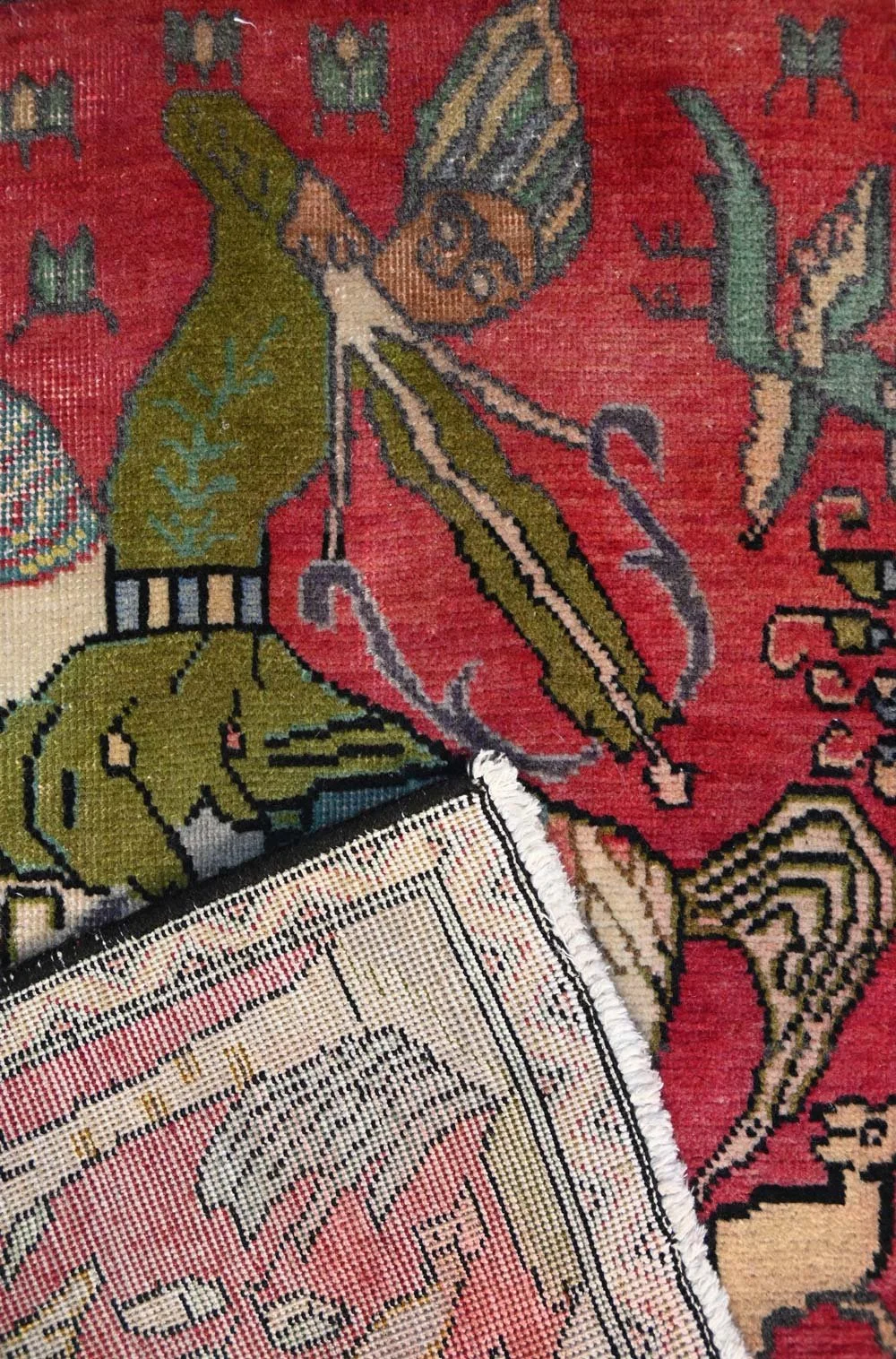A Persian hunting rug, Circa 1930s. No-172367(143x96cm)
A Persian hunting rug, Circa 1930s. No-172367(143x96cm)
The Seleucid dynasty was established in 312 BC by the Macedonian general Seleucus I Nicator, nearly two decades after Alexander the Great's victory over the Achaemenid king, Darius III. It took the Persians 135 years to regain their ancient homeland and form The Parthian Empire in 247 BC.
The campaign's remarkable elements were horses and skilled riders, pivotal in achieving victory and an indispensable asset for Persian armies. One of the most famous tactics of the Parthian fighters was the "Parthian Shot." This strategy involved feigning retreat from enemy cavalry and then swiftly turning back on galloping horses to shoot arrows at the pursuing enemy forces. The Parthians' mastery of such innovative tactics and their exceptional horsemanship enabled them to establish an empire that extended from the northern reaches of the Euphrates (in what is now central-eastern Turkey) to present-day Afghanistan and western Pakistan.
The "Parthian Shot" remained an essential skill for the Persian fighters for centuries. The tactic was practised in war and during peace times through hunting on horseback and found its way into legends, poetry and paintings as a symbol of strength and bravery.
Over two thousand years later, the hunting scenes are still depicted on carpets as the ones here. The rug here was woven over 90 years ago, and It is incredible how the weaver has managed to create such a beautiful impression.
This rug is made of wool pile on a cotton base. The natural wear, acquired through years of life, makes the texture more beautiful and creates an authentic charm and beauty.
Handknotted | Wool on cotton base






